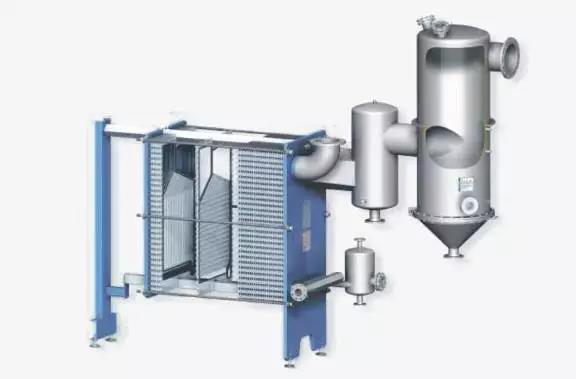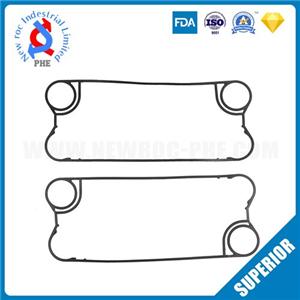Plate-type Evaporator and Its Application in Fruit Juice Concentration
The process of evaporation is a process of solution concentration (solvent recovery for some applications) when certain quantity of heat is introduced into the system. In the food and drinks industry, evaporation is a very important process and an essential process link for the production of many products.
In the fruit juice concentration industry, plate-type evaporator has the following advantages and has been widely applicated.

1. Good accessibility: plate-type evaporator is made up of a set of heat exchange plates fixed on the frame, the plates are separated from each other by sealer, or two plates form a box-style component by means of brazing, with steam channel in the middle. The heat exchange plates are easily dismantled, and the whole heat exchange surface can be expediently inspected visually. If problems such as clogging and scaling in the flow channel occur, the plates can be removed and the heat exchange surface can be cleaned manually. Individual damaged plate can be replaced. The number of plates can be handily increased or reduced.
2. When the product changes or the technology is adjusted, if necessary, the processing capacity of the equipment can be adjusted by increasing or reducing the number of plates, so as to get a more ideal treatment effect. The production capacity can be reduced to 40% of the original one.
3. In the case of the same heat exchange area, the height of plate heat exchanger is far smaller than that of tubular heat exchanger. Plate heat exchanger has a very low requirement for room height, even for large evaporators, the overall height of the equipment can also be below 5 meters, indicating that the structure of the plant will be simpler and the construction cost will be lower. Because of reduced volume, the installation of the equipment package is easier, crane or other special equipment are not needed, and the installation charge of the equipment is reduced accordingly.
4. The products remain in the evaporator for a short time. Many products to be evaporated have heat sensitivity, after staying at high temperature for a period of time, some components of them will be destroyed, the product flavor will reduce, and the color will darken. The heat transfer coefficient of plate heat exchanger is 2-4 times that of tubular heat exchanger. Meanwhile, as the space volume occupied is small, the heat exchange area can be designed larger, so that the residence time of the liquid to be evaporated in the heat exchanger can be shortened to 1/3 to 1/4, thus greatly improving the product quality.
5. As the coefficient of heat transfer is high, the liquid can pass through the heat exchanger faster, the volume of the liquid retained in the heat exchanger can also be reduced to 1/2 to 1/4, so that the evaporator can reach a balanced state in a shorter time after the evaporation process starts.
6. For high-viscosity liquid, plate heat exchanger is more applicable, as the heat transfer coefficient is high and liquid can quickly pass through the plate heat exchanger, besides, under the action of the surface detail of the plates, strong turbulence can be formed to avoid heat exchange surface adhesion. Moreover, even for high-viscosity liquid, a high heat transfer coefficient still can be achieved. Evaporator of plate-type heat exchanger has some advantages in the treatment of high-viscosity liquid.
7. The high turbulence level generated by surface detail of the plates not only is conducive to heat transfer, but also makes onsite cleaning faster and more efficient. Once serious scaling that can not be cleaned occurs, the plate can be replaced.
8. The temperature difference between various effects is smaller than that of shell-and-tube heat exchanger. When making multi-effect evaporator, the temperature of the first effect can be lower, and the number of effects can be increased or more moderate treatment on the product can be done.
In the following cases, the plate heat exchanger is not applicable, and tubular heat exchanger should be adopted.
1. When the working pressure is higher than 2bar.
2. When seal ring between the plates of plate heat exchanger is needed, and the working medium is therefore limited.
3. When large solid suspended particles (with particle size of 2mm or above) exist in the liquid to be concentrated.
4. For super-huge evaporator, the processing of large plates is difficult, so tubular heat exchanger was often adopted previously. But with the improvement of plate processing capacity, some plate evaporator set with evaporative power of 100 tons/hour has been successfully implemented.




